Seawilding practitioner track
Oh the sea, the sea, grey one day, blue the other. Stormy or calm. It gives and takes. Always busy. A place of sport and pleasure, trading, fishing, offshore industries... Under water is another world, a world of mysterious marine wildlife. Seldom seen, little known and in very serious decline. That must stop. It is time to rewild the sea.

The Seawilding practitioner track is an activation program for those who aim to contribute to a healthy and resilient North Sea ecosystem in conjunction with their own business activities or by developing supportive policies/funding. The focus is on initiating ecological and socialeconomical change by blending the knowledge and efforts of entrepreneurs, engineers, policy makers and NGO’s with the expertise of ARK Rewilding Nederland.
Who can participate?
Whether you’re an entrepreneur, policy maker or a company engineer, are working for a knowledge institution, NGO, a financial institution or a public authority, or an ecologist with a special interest for rewilding, as long as your work relates to the North Sea you’re very welcome to join.

To ensure the practitioner track meets the needs of all participants we work on invitation only. Please let us know whether you like an invite. We will then schedule a call to explore your personal rewilding challenges and learning objectives.
Practical information
The Seawilding practitioner track will be scheduled several times a year and can be booked as an in company training as well. For further information please see www.ark.eu/seawilding

Table of contents The Seawilding practitioner track 5 Time to seawild is now 7 Seven seawilding steps 11 Meet the ARK North Sea rewilders 13 Illustration The Living North Sea 14
learn how to apply the principles of rewilding in the context of ecology, organizations and sustainable seascapes
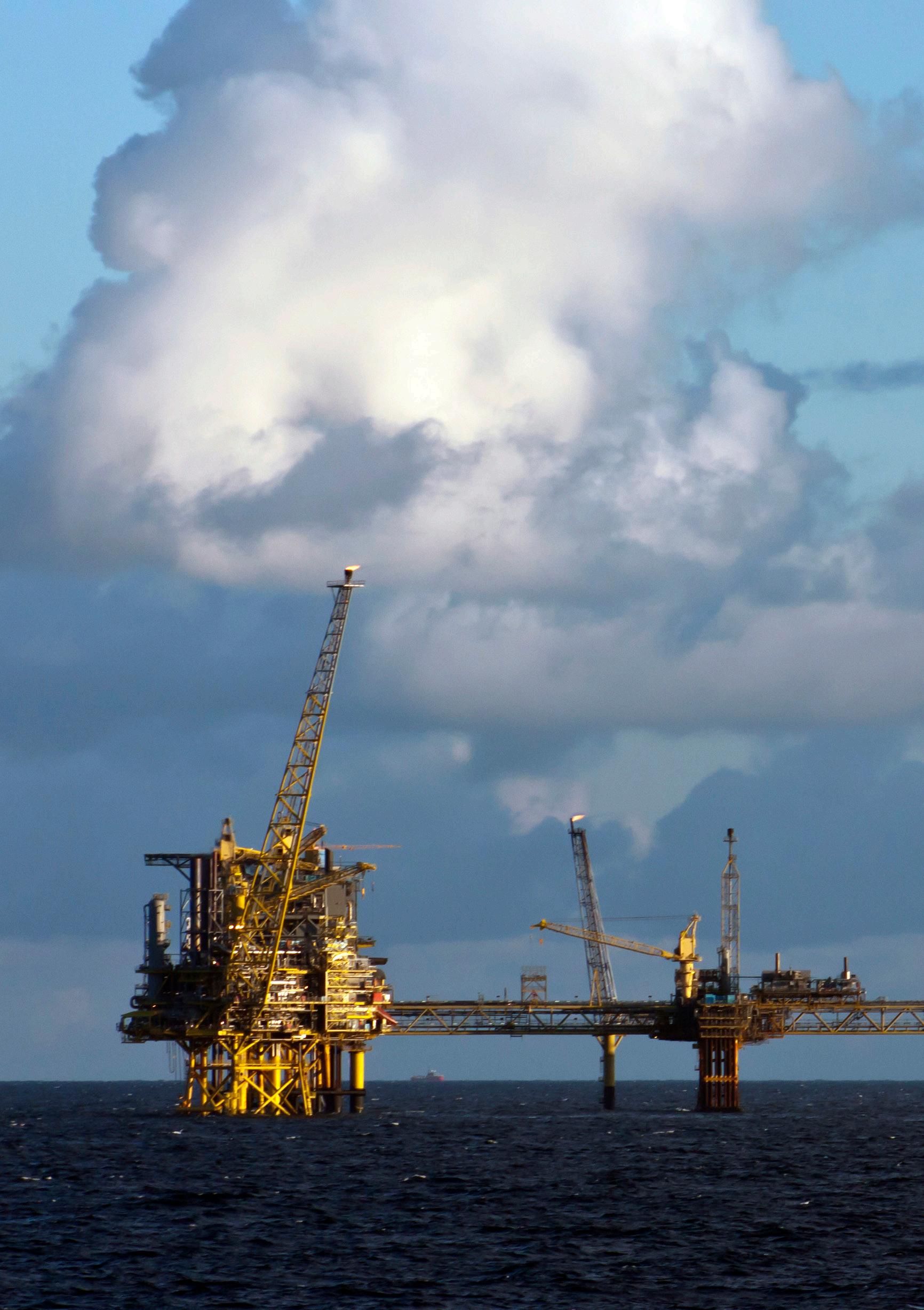
The Seawilding practitioner track
North Sea nature is in a deplorable state currently. It has a huge potential though to regrow a rich and robust, self-healing ecosystem given the right conditions to retstart and rewild. ARK wants to team up with North Sea stakeholders, to share knowledge, kick-start and maintain seawilding measures that’ll help nature to bounce back.
The Seawilding practitioner track consists of a two-day workshop, three online co-creation sessions and personal guidance on state-of-the-art rewilding principles and practices. In the practitioner track we’re combining your personal and practical experience with concepts, best practices, case descriptions and co-creation.
The practitioner track will:
• enhance you knowledge of marine ecology;
• connect your inspiration to the global sea rewilding community;
• provide a deep dive into rewilding practices and philosophy;
• explore how rewilding can be part of your organization’s sustainability strategy;
• show what can and can’t be achieved by rewilding (like a fixed outcome);
• explain what sets rewilding apart from nature conservation/restoration;
• work towards a joint effort in seawilding.
5
North Sea nature needs a restart to rewild. That implies a redesign of its human use

Time to seawild is now
Human use is increasingly industrializing an already degraded system. We need to urgently bend the curve of marine biodiversity loss by creating the right conditions for sea life to take her course to a more resilient and regenerative state.
Apart from a paramount increase in biodiversity, North Sea rewilding initiatives – seawilding for short – could create benefits in many fields and accelerate existing work in the protein transition, climate impact mitigation and in the development of sustainable seascapes. The choices we make in the next few years will echo for decades.
Seascape perspective
Seawilding focuses on the whole ecosystem functioning at the level of humans, systems, and nature within the planetary boundaries. It is an active approach that includes initiatives to re-initiate natural processes and to enrich and stabilize ecosystems in conjunction with the human interaction.
Figure modified based on Perino et al. "Rewilding complex ecosystems." Science 364.6438 (2019)
Seawilding is applied at various scales (hot-spots, area’s and seascapes) and at increasing levels of complexity (species, habitats, user communities). Interventions include for instance kick-starting biogenic reefs, reintroduc-
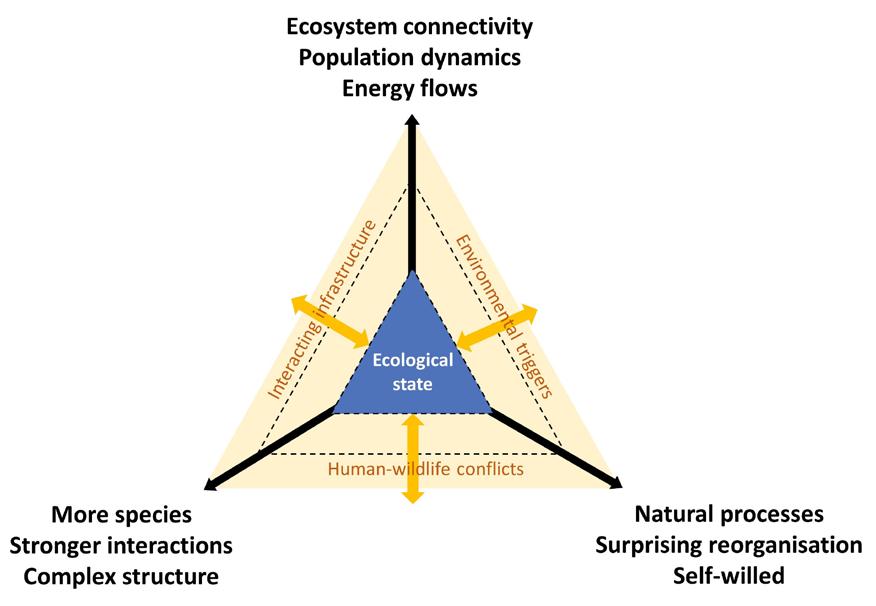
7
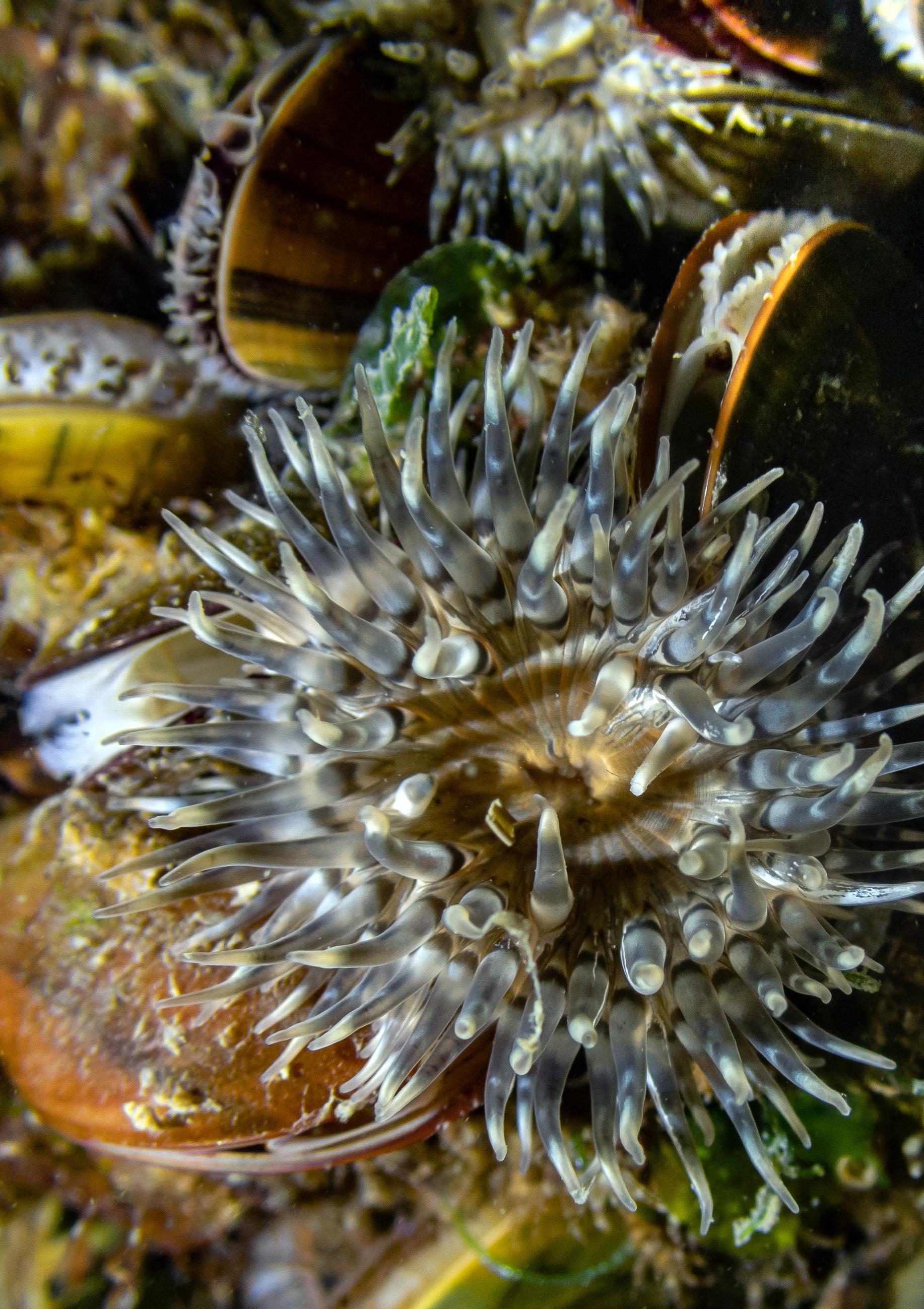
ing large predators, experimenting with sea farming and shared use, and setting up strategic collaborations between actors around seascapes.
A new attitude
We recognize that seawilding redefines the way we, as a person, organization and community, interact with the sea. Starting to seawild implicates system and social change: leaving the control position and learning to trust that nature knows best.
Seeing humans as part of nature – equally important as a whale, a seabream, a coral or an algae, all being equally depended on a sound ecosystem - is a prerequisite for rewilding. 'Nature' in this view is an ongoing, self-shaping, wild process.
ARK is a leader in this approach in the Netherlands, working on land for almost 35 years and in the Dutch North Sea since 2015.
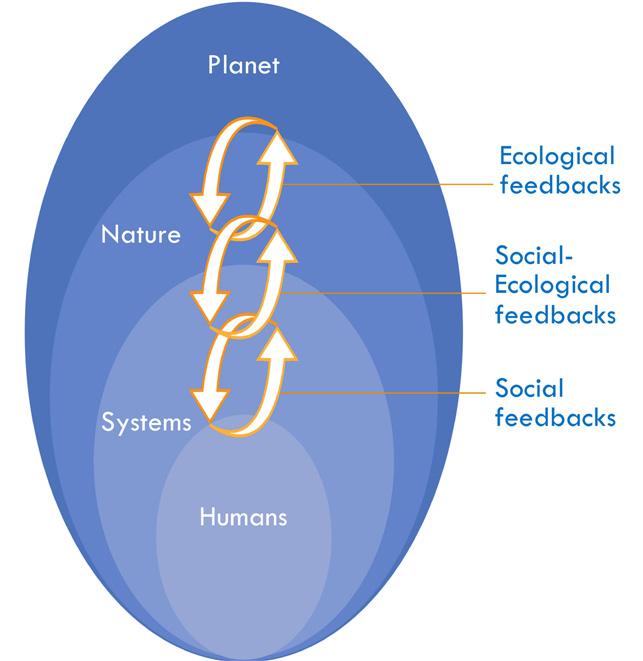
9
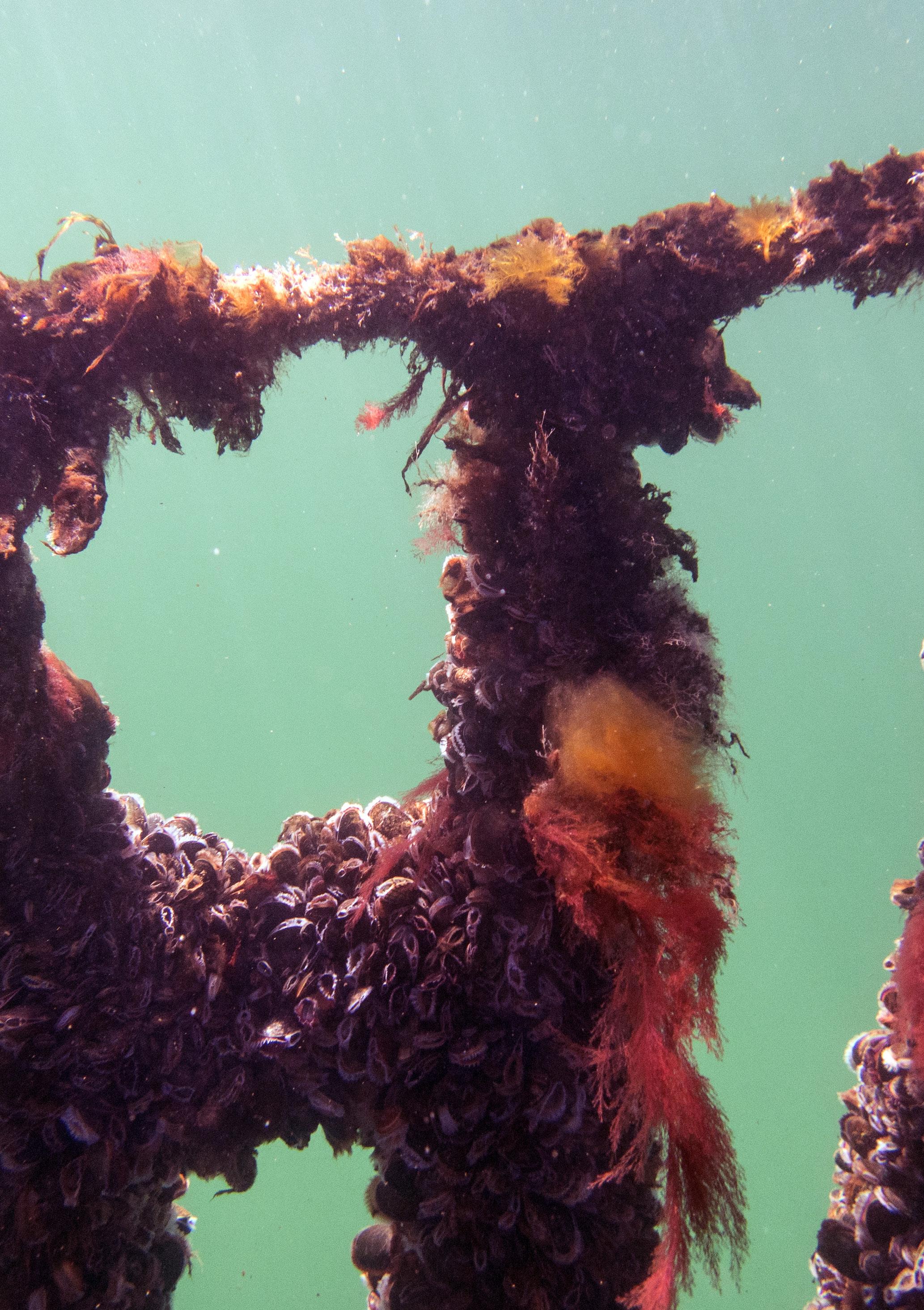
it’s time to redefine our relationship with the north sea nature
Seven seawilding steps
The Seawilding practitioner track will inspire you by examples from our projects, give new perspectives on marine nature, and we’ll work on how to apply the principles of rewilding in the context of ecology, organizations and sustainable seascapes.
1 Sensing the sea
• seeing, sensing and relating to the sea and it’s submerged marine life.
2 Deep dive into natural processes
• introduction to the North Sea Marine Ecosystem; a possible future state of the North Sea Ecosystem (five years from now); the current state: diminished natural space and a shifting baseline;
• how can we bridge the gap?
3 Rewilding perspective, principles, and practices
• what is rewilding?
• what needs to be developed in our attitude, mindset, and behavior to become rewilders?
• what practical interventions by persons, organizations, and society?
4 Connecting the dots
• reflection on our/your position in the bigger system;
• bending the curve towards net zero (no biodiversity loss) and net positive (increase in biodiversity);
• overview of current transitions.
5 A call to concerted action: lessons learned and insights gained
• what is the rewilding challenge and your personal call to action?
• what is the journey of your organization and our joint call to action?
• how to build successful joint rewilding initiatives?
6 Scaling up to mainstream application
• how to scale up a proof of concept to new business models?
• how to transform current value chains and markets?
• barriers and leverage points in the social-ecological North Sea system.
7 Interventions for entrepreneurs, policy makers and engineers
• challenges of executives, policy makers and designers;
• shifting criteria in setting strategic priorities;
• interdisciplinary work and implementing new design criteria.
11
what
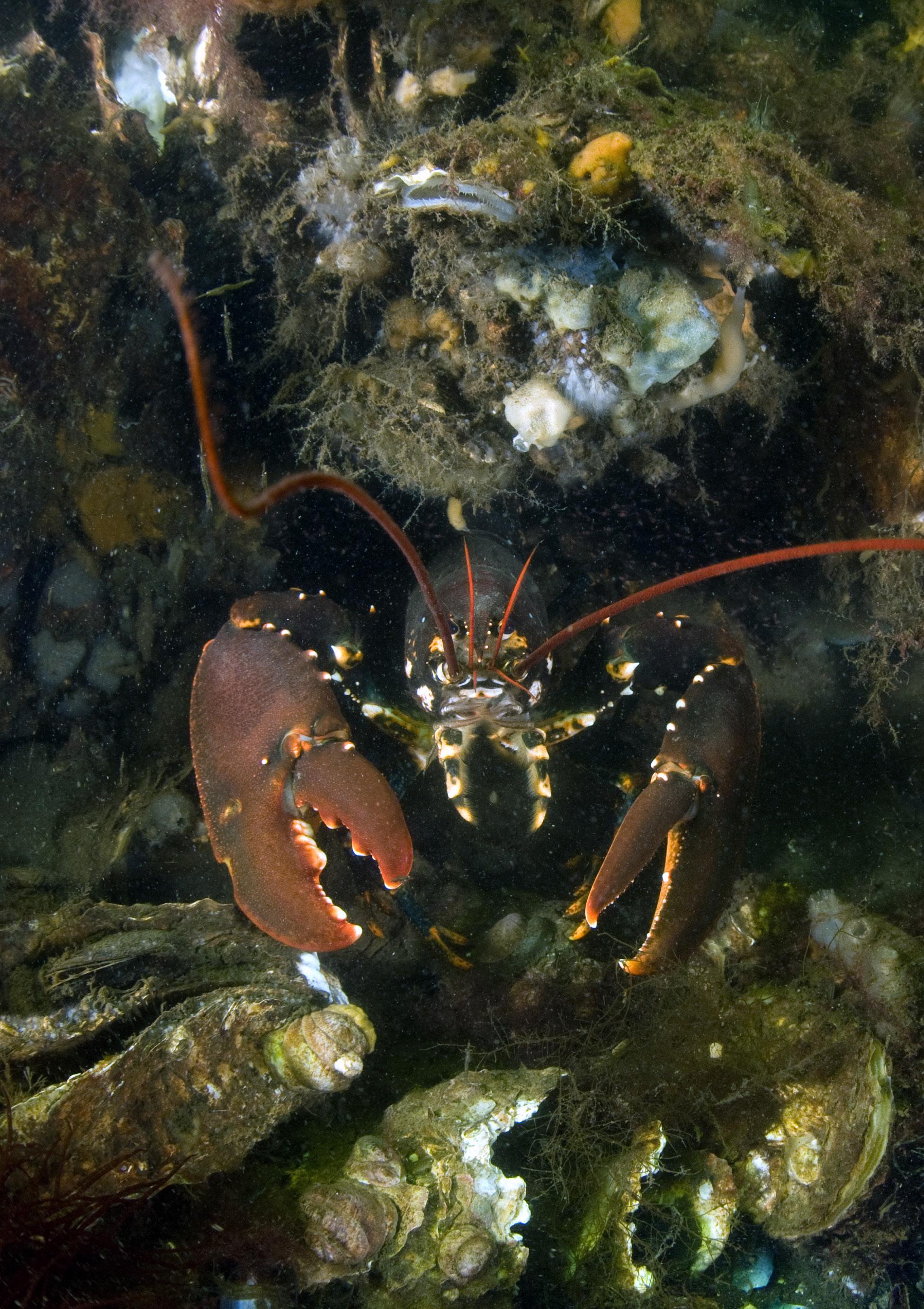
Rewilding is
happens when nature is given the chance to take its course
Meet the ARK North Sea rewilders

Gijs van Zonneveld Initiator and now advisor of the ARK North Sea program, off shore butterfly hunter
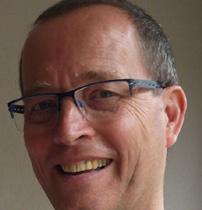
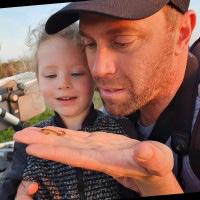

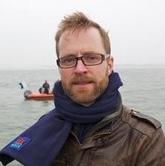
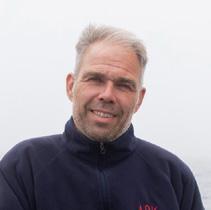
Karel van den Wijngaard Involved with flat oyster experiments since 2015, current program leader, Dogger Bank veteran.

Gwenaël Hanon marine ecologist, rising stella di mare, dedicated to sharks and rays, busy with sea farming experiments.
Ernst Schrijver marine animal biologist, field work coordinator & seafarer, ichtyophile, expert on oyster spat on shell and monitoring.
Marijke van de Staak shell fish reef builder and advocate, passionate wave surfer. Iris Roggema storyteller, seafood lover, seen a fin whale poop.

Rembrandt Zegers deal maker on behalf of nature, seeking to transform human-nature relations, sea sailor.
Rien van Leeuwen innovation- and transition facilitator, walks the beach with his dog & representatives of future generations.
13

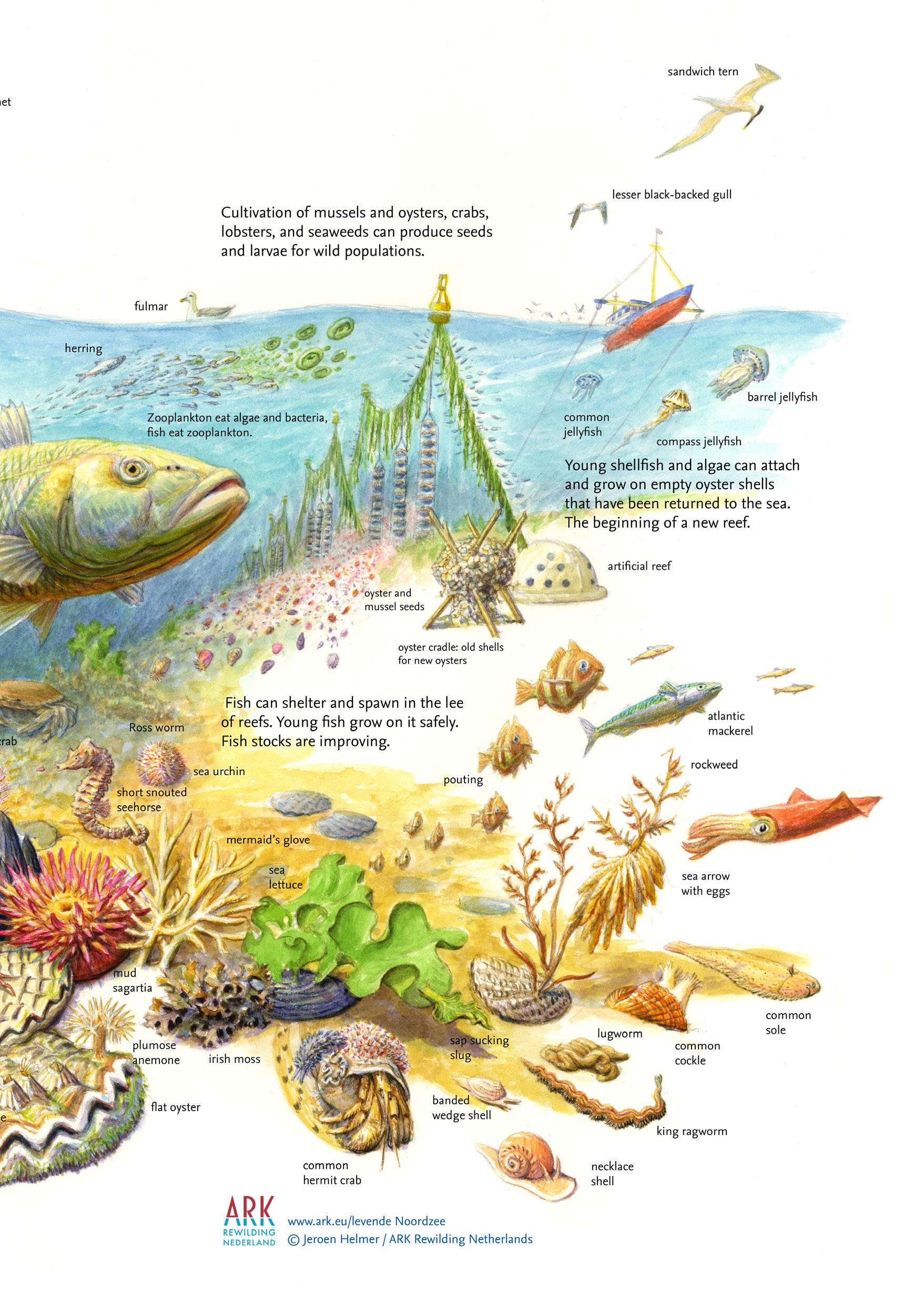
www.ark.eu/seawilding
Photo's Ad Aleman, Cor Kuyvenhoven, Ernst Schrijver Text Iris Roggema, Rien van Leeuwen




















